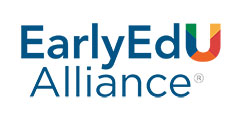California Multilingual Learners
California Multilingual Learners

At the College of the Desert (COD)—a community college with four campuses in California’s Coachella Valley—more than 2,000 students pursue certificates and degrees in the Childhood Development and Education (CDE) program. Their studies open a wide range of opportunities, including paths to earning associate and bachelor’s degrees.
With the COD childhood education program thriving, faculty adviser Maria Avalos and her colleagues are now exploring options for assembling an online course catalogue that can be made available throughout California’s 116 community colleges.
EarlyEdU Alliance® online courses support this work through a relationship that has grown since the two programs connected in 2015. Many features of both programs make for a good fit. Free courses—including six currently offered at COD—support the college’s goal of “zero textbook costs” by 2026. The option of choosing remote study is crucial in a sprawling, mostly rural area that lacks adequate transportation and childcare options. EarlyEdU’s flexible course content addresses the needs of students with a wide range of skills and experience, from high schoolers and students hoping to return to the workforce after years away, to older, more seasoned childcare providers and teachers.
Importantly, EarlyEdU offers Spanish-language resources, a considerable benefit for an institution whose enrollment is about 80% Hispanic. “The majority of students in our program speak Spanish,” explains Maria Avalos. “We work with a large population of family childcare providers, many of whom are only Spanish speakers. To facilitate their educational goals, Spanish is a key factor.” Students are invited to submit assignments in Spanish or English.
EarlyEdU provides “rich approaches to learning,” Avalos says, pointing to the availability of videos, articles, and interactive opportunities. One of those opportunities is an approach to exploring each child’s community via an innovative community assessment that is part of the EarlyEdU Family Engagement course.
Family Engagement is one of Avalos’ favorite teaching tools. “We talk about the child, the family in the community, and how we can bring resources together in the child's best interest, as well as support the family. The neighborhood walk assignment provides an opportunity to ask, first of all, do you know your community? Secondly, what kinds of resources are available to families?” Students take videos of themselves strolling through their neighborhoods. Avalos and her colleagues ask them to “tell us about the agencies and places available there. Record what you have and tell us how you would utilize them to enhance children's learning ability.”
With this activity, students compile a family resources portfolio that touches on every part of local support systems for children and families, including preschools and child development centers; recreation districts that give families financial assistance to participate in sports; centers for psychological and educational assessment; mental health and crisis counseling facilities; health and social services; food assistance; affordable housing agencies and homeless shelters; immigration and employment services; and resources for children and families with disabilities.
Avalos advises her students to reach out to a person within the community who is knowledgeable about the area and then just conduct a walk together. “Or, I’ve had students who made an appointment with a community agency representative, went in, asked about services, and recorded the interview. That knowledge base helps inform all classes and all the teaching positions that students might have in the future.”
Another way to connect with the local culture and community is through the communities of reflection and practice that are integral to EarlyEdU courses. “I have created a community of practice groups. Intimate, inclusive groups,” says Avalos. “So, if I have 60 students in a class, rather than having a discussion where everyone replies, I create small groups of five or seven. I place Spanish speakers in a group that they feel comfortable with. The students feel comfortable, sharing at their level and pace.”
One of the ways Avalos accommodates the unique needs of her students is to establish courses in a “high-flex modality,” reducing the 10- or 15-week sessions to four weeks. Students are invited to take class in person twice a week. “I don’t want to exclude content,” Avalos explains. “So, some weeks are a bit heavier. I tell the students that, just this week, we’re going through two sessions. I want to review the entire module content to build up to the next ones.”
The focus is to identify education pathways for all CDE students. Avalos asserts that a goal at the heart of the entire COD/EarlyEdU undertaking is “return to school and get your credentials, BA, and Master’s.” She has noticed an increase in the number of younger students in the 20- to 24-year-old age range enrolling at the college. At the same time, her program accommodates students who haven’t attended school in twenty to thirty years.
The challenge of meeting her students’ needs is, Avalos says, a continuous learning process. “I tell the students to remember that I’m a student myself, and the day I lose that ability, I will not be efficient in the classroom.”
EarlyEdU Courses in Action
Learn more about the EarlyEdU courses at College of the Desert
- Becoming a Teacher Leader
- Child Observation and Assessment
- Child Development and Brain Building
- Cognition and General Knowledge: Science, Math, and Logic and Reasoning
- Engaging Interactions and Environments 1
- Engaging Interactions and Environments 2
- Family Engagement
- Interactions and Environments/Interacciones y entornos educativos
- Learning Leaders in Early Childhood Education
- Practice-Based Coaching
